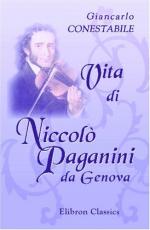|
This section contains 1,102 words (approx. 4 pages at 300 words per page) |

|
1746-1828
Artist
Birth and Early Career. Born in Fuendetodos, Spain, Francisco Goya was a son of a small landowner who could provide only a rudimentary education for his son. As a boy, Francisco showed a keen interest in and talent for drawing and painting, first developing his craft in copying works by masters such as Rembrandt (1606-1669) and Spanish court painter Diego Velasquez (1599-1660). At the age of fourteen Goya painted a series of frescoes for the local church in Fuendetodos. The next year he entered the San Louis Academy in Zaragoza. At the age of seventeen he went to Madrid, where he was influenced by the great Venetian Rococo artist Giovanni Tiepolo (1696-1770). Goya also met the Neoclassical painter Anton Raphael Mengs (1728- 1779). In 1770 Goya ventured to Italy, reportedly working his way to Rome as a bullfighter. Once in Rome he apparently painted little, but...
|
This section contains 1,102 words (approx. 4 pages at 300 words per page) |

|




